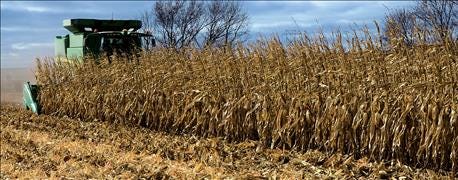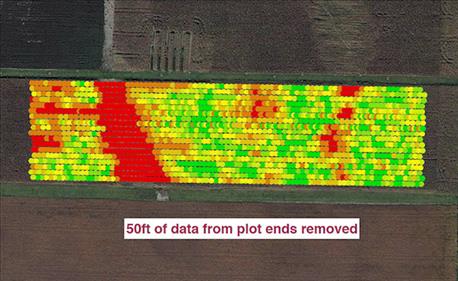
One year ago two hybrids were planted in the Indiana Prairie Farmer and Purdue University exclusive trial at the Purdue Throckmorton Center near Romney. The idea was to see how the two hybrids performed on different soils within the field. It was an attempt to drill down to whether putting specific hybrids in specific locations would pay. It’s the idea behind the multi-hybrid concept.
Bob Nielsen, Purdue Extension corn specialist, can take yield data and a soil map, overlay them and look for comparisons and differences. To be able to do this, the combine needed to be calibrated correctly so that data cross the trial was accurate.
Two hybrids were planted in an 8-acre field trial of about 8 acres with two major soil types. Nielsen was able to pull some data out for comparisons. “The field was too small to make really accurate comparisons,” he says. “But I was able to clip out two areas from the two different soil types.
|
Measuring performance of two hybrids in the same field offers insight into the value of multi-hybrid planting. |
Related: A conversation about multi-hybird planting
On the better soil, yields of the two hybrids were the same. They were in the 220 bushel per acre range. On the soil located in a swag through the field, there was a yield difference between hybrids. Yield ranged from around 100 to about 113 bushels per acre. This area was affected by heavy rain and ponding.
One hybrid outperformed the other on the one soil, and performed equally with no difference on the other soil. What does that say about the concept of matching hybrids to soil types?
|
YIELD MAP: Here is how the yield data from the plot looked after Bob Nielsen removed end rows from the map using computer software. |
“My argument would be that you wouldn’t need two hybrids here,” Nielsen says. “If the two hybrids are the same on one soil and one was better on the other soil, I would just plant the one that was better on the second soil in the whole field. You wouldn’t be giving up anything in the other soil type - they were equal there.”
In Nielsen’s eyes in this case, there wouldn’t be an advantage for planting the lower yielding hybrid on soil two in either case in this field. He wouldn’t need a multi-hybrid planter to plant this field, based on this information, he says.
|
TWO HYBRIDS, TWO SOILS: The blue section represents where Bob Nielsen clipped out data to compare the two hybrids on one soil type. The red section represents where he did the same with a second soil type. There was no difference between the two hybrids in the blue area, and a small difference, in the red section. |
About the Author(s)
You May Also Like







